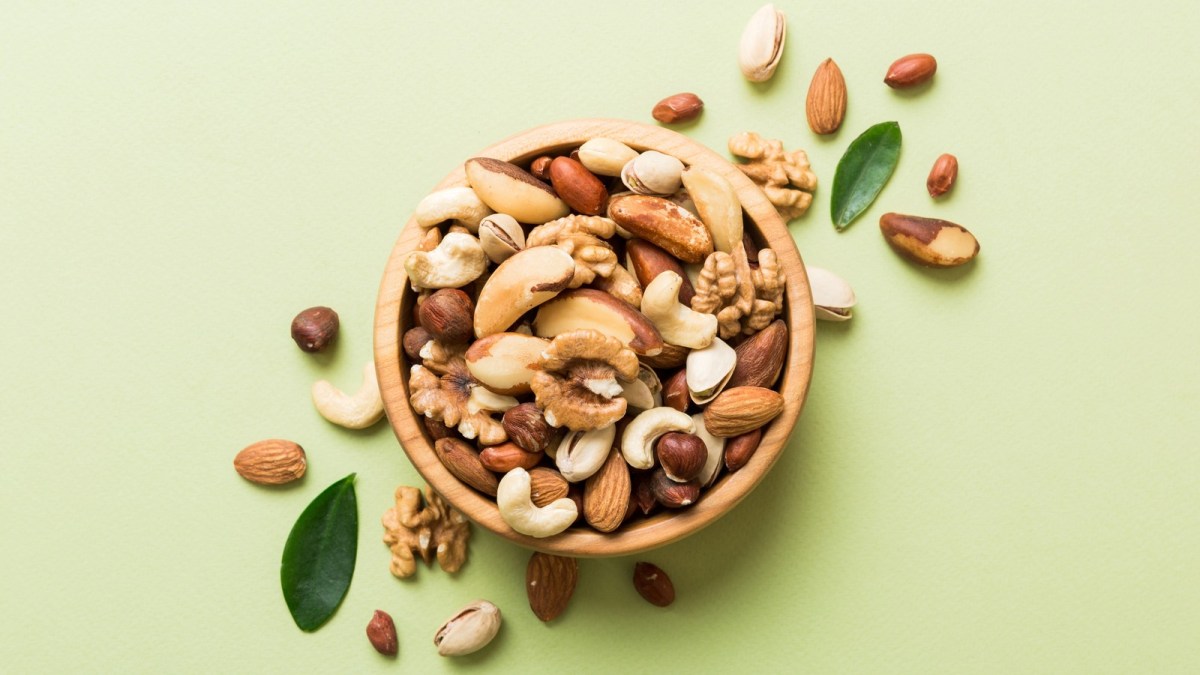Imagine a world where the rich, creamy texture of cashew cheese and the satisfying crunch of almond flour cookies are accessible to everyone, regardless of dietary restrictions. This isn’t a fantasy; it’s the exciting reality of reinventing beloved nut-based dishes with clever, delicious nut-free substitutes. We’ll explore a vibrant landscape of alternatives, from sunflower seed butter’s earthy sweetness to the surprising versatility of chickpea flour, uncovering the secrets to maintaining flavor and texture in recipes once thought impossible to adapt.
This journey delves into the practical aspects of recipe adaptation, offering step-by-step guides to transform classic nut-based recipes into allergy-friendly delights. We’ll unravel the nuances of flavor enhancement, revealing how spices, herbs, and clever techniques can seamlessly bridge the gap between nut-based originals and their inventive replacements. Safety and inclusivity are paramount; we’ll equip you with the knowledge to create a kitchen environment where everyone can enjoy delicious food, free from worry.
Nut-Free Substitutes
The rising prevalence of nut allergies necessitates the exploration of effective and delicious nut-free alternatives in culinary practices. This section delves into various substitutes for common nut-based ingredients, examining their textural and flavor profiles, nutritional compositions, and suitability across diverse recipes. Understanding these nuances allows for the creation of inclusive and flavorful dishes accessible to all.
Nut-Free Substitutes for Common Nut-Based Ingredients
Many nut-based ingredients have viable alternatives that can mimic their functionality and, in some cases, even enhance certain aspects of a dish. These alternatives offer a range of textures and flavors, catering to diverse culinary needs and preferences.
Almond Flour: Sunflower seed flour, coconut flour, and oat flour are excellent almond flour substitutes. Sunflower seed flour offers a slightly nutty flavor and a light, fluffy texture, ideal for baking cakes and muffins. Coconut flour, known for its absorbent nature, creates denser baked goods with a subtly sweet coconut taste. Oat flour provides a hearty texture and a mild, slightly sweet flavor, perfect for cookies and quick breads. These flours may require slight recipe adjustments due to their varying absorption rates.
Peanut Butter: Sunflower seed butter, tahini (sesame seed paste), and pumpkin seed butter offer compelling peanut butter alternatives. Sunflower seed butter boasts a mild, slightly sweet taste and a creamy texture similar to peanut butter, making it suitable for sandwiches and smoothies. Tahini, with its distinctive earthy and slightly bitter flavor, adds a unique complexity to dips, dressings, and sauces. Pumpkin seed butter, possessing a richer, more intense flavor than sunflower seed butter, works well in savory dishes and adds a depth of flavor to baked goods.
Cashew Cream: Cashew cream’s creamy texture can be replicated using other seeds and legumes. Sunflower seed cream, made by blending soaked sunflower seeds with water, offers a smooth, slightly nutty creaminess. Similarly, silken tofu, blended until smooth, provides a neutral-flavored, creamy base for sauces and dips. For a richer, slightly tangier option, blended white beans can create a surprisingly versatile cream. These alternatives might require additional flavoring to match the richness of cashew cream.
Comparison of Culinary Applications
The success of a nut-free substitute heavily depends on its application within a specific recipe. For instance, sunflower seed flour’s light texture makes it suitable for cakes, while coconut flour’s absorbency is better suited for denser baked goods. Similarly, tahini’s distinct flavor profile is best utilized in savory dishes, whereas sunflower seed butter’s milder taste works well in both sweet and savory applications. Understanding these nuances is key to successful substitution. Experimentation is encouraged to discover the optimal alternative for individual recipes.
Nutritional Comparison of Nuts and Nut-Free Substitutes
The following table provides a general comparison of the nutritional content of common nuts and their best nut-free alternatives. Note that values can vary depending on the specific brand and processing methods. This table serves as a guideline and should not be considered exhaustive.
| Nutrient | Almonds (1 oz) | Sunflower Seeds (1 oz) | Oats (1/2 cup rolled) |
|---|---|---|---|
| Protein (g) | 6 | 5 | 5 |
| Fat (g) | 14 | 14 | 5 |
| Fiber (g) | 3 | 2 | 4 |
| Carbohydrates (g) | 6 | 3 | 27 |
| Nutrient | Peanuts (1 oz) | Pumpkin Seeds (1 oz) | Tahini (2 tbsp) |
|---|---|---|---|
| Protein (g) | 7 | 7 | 3 |
| Fat (g) | 14 | 13 | 13 |
| Fiber (g) | 2 | 2 | 2 |
| Carbohydrates (g) | 6 | 4 | 4 |
Recipe Development

Creating original nut-free dishes requires careful consideration of both flavor and texture. Nut-based dishes often rely on the richness and creaminess provided by nuts, so finding suitable substitutes that mimic these qualities is crucial. The following recipes demonstrate how sunflower seeds, pumpkin seeds, and tahini can be successfully used to create delicious and satisfying nut-free alternatives.
Creamy Sunflower Seed Pesto Pasta
This vibrant pesto utilizes the subtle earthiness of sunflower seeds to create a creamy, flavorful sauce that coats pasta perfectly. The addition of lemon brightens the pesto, preventing it from becoming too heavy.
- Ingredients: 1 cup raw sunflower seeds, 2 cloves garlic, 1/2 cup grated Parmesan cheese (or nutritional yeast for vegan option), 1/4 cup olive oil, 2 tablespoons lemon juice, salt and pepper to taste, 1 pound pasta (any shape).
- Instructions: Combine sunflower seeds, garlic, Parmesan cheese (or nutritional yeast), olive oil, and lemon juice in a food processor. Process until a smooth paste forms, scraping down the sides as needed. Season with salt and pepper to taste. Cook pasta according to package directions. Drain pasta and toss with the sunflower seed pesto. Serve immediately.
- Cooking Time: 20 minutes
- Temperature: Boiling water for pasta.
Roasted Pumpkin Seed and Chickpea Bowl with Lemon-Tahini Dressing
This hearty and nutritious bowl combines the satisfying crunch of roasted pumpkin seeds with the protein-rich chickpeas. The lemon-tahini dressing adds a creamy, tangy element that ties all the flavors together. The vibrant colors and textures create a visually appealing dish.
- Ingredients: 1 cup pumpkin seeds, 1 can (15 ounces) chickpeas, rinsed and drained, 1 red bell pepper, diced, 1/2 cup chopped cucumber, 1/4 cup chopped red onion, 2 tablespoons olive oil, salt and pepper to taste, For the dressing: 1/4 cup tahini, 2 tablespoons lemon juice, 1 tablespoon water, 1 clove garlic, minced, salt and pepper to taste.
- Instructions: Preheat oven to 375°F (190°C). Toss pumpkin seeds with 1 tablespoon of olive oil, salt, and pepper. Spread on a baking sheet and roast for 10-12 minutes, or until golden brown and fragrant. In a large bowl, combine roasted pumpkin seeds, chickpeas, red bell pepper, cucumber, and red onion. For the dressing: Whisk together tahini, lemon juice, water, garlic, salt, and pepper until smooth and creamy. Adjust consistency with more water if needed. Pour dressing over the chickpea and vegetable mixture and toss gently to combine. Serve immediately or chill for later.
- Cooking Time: 25 minutes
- Temperature: 375°F (190°C) for roasting pumpkin seeds.
Tahini-Glazed Sweet Potatoes with Spiced Cauliflower
This recipe showcases the versatility of tahini as a flavorful glaze. The sweet potatoes provide a natural sweetness that complements the savory spiced cauliflower. The textures—creamy tahini glaze, tender sweet potatoes, and slightly crispy cauliflower—offer a delightful contrast.
- Ingredients: 2 large sweet potatoes, peeled and cubed, 1 head cauliflower, cut into florets, 1/4 cup tahini, 2 tablespoons maple syrup, 1 tablespoon soy sauce (or tamari for gluten-free), 1 teaspoon ground cumin, 1/2 teaspoon ground coriander, 1/4 teaspoon cayenne pepper (optional), 1 tablespoon olive oil, salt and pepper to taste.
- Instructions: Preheat oven to 400°F (200°C). Toss sweet potatoes with 1 tablespoon olive oil, salt, and pepper. Spread on a baking sheet and roast for 20-25 minutes, or until tender. In a separate bowl, toss cauliflower florets with remaining olive oil, cumin, coriander, cayenne pepper (if using), salt, and pepper. Add to the baking sheet with sweet potatoes and roast for another 10-15 minutes, or until cauliflower is tender-crisp. While vegetables are roasting, whisk together tahini, maple syrup, and soy sauce in a small bowl until smooth. Once vegetables are cooked, drizzle tahini glaze over sweet potatoes and cauliflower and toss gently to coat. Serve immediately.
- Cooking Time: 35-40 minutes
- Temperature: 400°F (200°C) for roasting vegetables.
From the satisfying creaminess of a nut-free cashew cheese alternative to the delightful crunch of a perfectly baked almond flour-free cookie, this exploration has showcased the remarkable potential of nut-free cooking. By embracing creative substitutions, mastering flavor enhancement techniques, and prioritizing safe kitchen practices, we can recreate the joy and satisfaction of nut-based dishes for everyone. The journey of reinventing recipes is not merely about adaptation; it’s about expanding culinary horizons and creating a more inclusive and delicious world of food.
Key Questions Answered
What are the biggest challenges in replacing nuts in baking?
The biggest challenges are replicating the binding properties and unique textures that nuts provide. Nut-free alternatives may require adjustments to liquid ratios and the addition of binding agents like flaxseed meal or applesauce.
Can I use any nut-free alternative in any recipe?
No, different nut-free alternatives have varying textures and flavor profiles. Careful consideration of the recipe’s requirements is crucial for successful substitution. For example, sunflower seed butter won’t work as a direct replacement for almond flour in a cake.
How do I prevent cross-contamination when cooking nut-free dishes?
Dedicate separate cutting boards, utensils, and cookware for nut-free dishes. Thoroughly clean all surfaces before and after handling nuts. Label all ingredients and containers clearly.
Are all nut-free alternatives equally nutritious?
No, the nutritional profiles vary significantly. Some offer comparable protein and fiber, while others may be higher in fat or carbohydrates. Refer to nutritional information to make informed choices.


